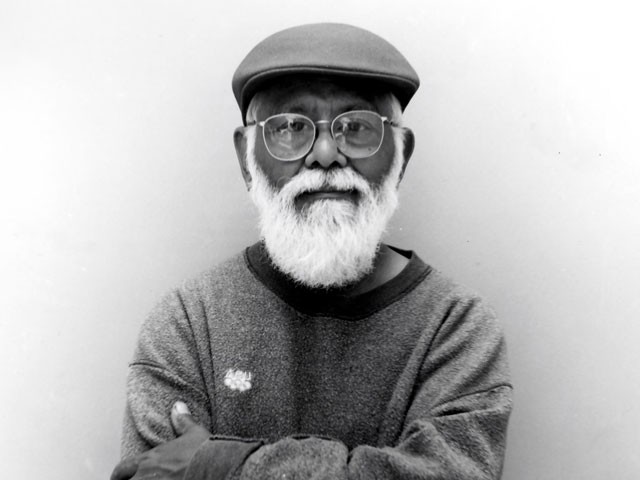The best way to describe Beyond Boundaries is a as a travel guide to destination Ruben Miguel Trejo. While it can’t possibly substitute for the real thing, it offers readers an opportunity to experience one of the region’s signature artists whose influence as an educator continues will continue to be felt for generations.
There are many routes in this book by which to travel: full-color photographs, including many from throughout Trejo’s life; a variety of essays, ranging from anecdotal to a scholarly description of what can be seen and learned from the journey; and, of course, as a companion to the MAC’s art exhibition itself.
We have not one but several travel guides. In his introduction, MAC senior curator Ben Mitchell frames the exhibition and the impact of Trejo’s artwork, especially regionally. Tomas Ybarra-Frausto, a former Stanford University professor, explains important themes, influences, and historical and cultural references. EWU Professor Emeritus John Keeble’s longstanding friendship with Trejo provides a touching remembrance of the journey written only a few days before Trejo died.
Much of the terrain in this book is familiar: a portrait of our immigrant past rooted in the land, education and travel. Trejo — a Chicano Horatio Alger of sorts — created images that made a tremendous impact on others. And yet there is unfamiliar, even daunting terrain here, especially for so-called mainstream society. For example, the title — Aztlan y mas alla — refers to the ancient MesoAmerican origin myth of Aztlan, a socially and politically charged notion of direct lineage between much of the Southwest and the ancient Aztecs. Taken from Trejo’s 2006 exhibition by the same name, “Aztlan and Beyond” could — like much of Trejo’s work — be meant as an experience that operates on many different levels at once: humorous, sardonic, spiritual, philosophical, autobiographical. And yet, as Trejo directs us to move or look “beyond,” we have to be willing to invest a little more of ourselves to find our own path — not just to destination Trejo, but beyond the boundaries that we have drawn for ourselves on our own journeys.


